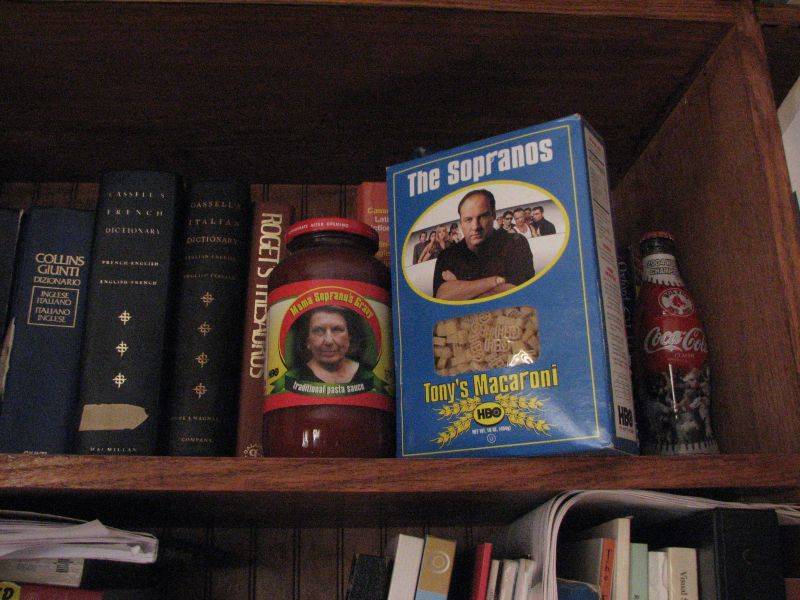Sharks and Mobsters: 2 Oft-told Tales
On weekends, instead of joining my weekday early morning coffee klatsch at Dizzy’s “A Finer Diner,” I amble over to Connecticut Muffin, a coffee shop that has nothing to do with “The Nutmeg State.” My daily newspaper reading pattern also varies on weekends. On Saturdays I either read Nowy Dziennik (slownikiem) or America Oggi and La Repubblica (con il mio dizionario). On Sunday it is vice versa (viceversa). Today, I was intrigued by a front page OGGI special “La Lettera di Castellaneta al Washington Post: Plauso degli italiani d’America” that noted in conclusion “Il blog Foreign Policy Association, raccontando ieri la vicenda, sottolinea che all’ambasciata d’Italia sono giunti “numerosi” messaggi congratulazioni di italoamericani stufi di vedere sui media americani I soliti stereotipi del coinvolgimento degli italiani nelle attivita mafiose.” (the Foreign Policy Association blog related the incident yesterday and noted that the Italian Ambassador had received numerous congratulatory messages from Italo-Americans angry at seeing in the American media the usual stereotype of Italians involved in mafia activitiies.). Naturally, I assumed that I-Italy.org would have the story on its own Front Page, which of course it did. I-Italy.org is now one of my most dependable sources for media things Italian and Italian American. There is no need to reprint here Giovanni Castellaneta. Ambassador of Italy to the United States’ Letter to the Editor of the Washington Post, but it is extremely important to emphasize the time dishonored pattern of ethnic insult found in this otherwise honorable press. The Ambassador was responding to the Post’s one sided (and ethnically enhanced) March 1 front-page article, “As Italy’s Banks Tighten Lending, Desperate Firms Call on the Mafia.”

Al Capone sits in the italian Market on Arthur Avenue in The Bronx and greets those looking for an authentic Italian American neighborhood.
To demonstrate the “pattern”of which I write, Ambassador Castellaneta’s well phrased complaint must be conjoined with that of Anthony Julian Tamburri’s slightly less recent I-Italy.org offering “Just when we thought it was safe to go back into the water...” that cited another example of simple-minded stereotyping by Michael Kinsley’s opinion editorial in the Washington Post “Bailing Out Organized Crime, The Treasury Has a Gun to Its Head” that featured a photograph of James Gandolfini in a Sopranoseque pose and a bigoted ethnic parody of the federal bailout of an unfortunately (for Italian Americans) mostly non-Italian industry.

See what is offered a few steps away from the Italian American Museum on Mulberry Street in Manhattan.
Five years ago, as some readers may already know, I was deeply engaged with prominent Italian American leaders in The Coalition Against Racial, Religious and Ethnic Stereotyping (CARRES), in the battle over ethnic stereotyping in Steven Spielberg’s DreamWorks production of Shark Tale. I did lots or research and wrote lots of words, some of which were actually read by other people all over the world, but the piece below never met the light of day until now. It was a letter to the New York Times in response to the idiotic rating of, "PG. Parental guidance Suggested. Some material may not be suitable for children. Some mild language and Crude Humor" given to Shark Tale and the equally malformed movie review by A.O. Scott who gave it his own rating of "PG (Parental guidance suggested). It has some mildly scary situations and one death." Note this was a production intended to be viewed mostly by impressionable young children with only slightly less impressionable parents, or hired care givers, in tow.
October 1, 2004
Letters to the Editor New York Times
To the Editors: I was surprised to read in A.O. Scott’s review of “Shark Tale” (Fish With Stars' Voices in a Pop-Culture Sea, October 1, 2004) about “cheerful quasi-ethnic stereotypes… that are technically insulated against offensiveness because, well, they’re all fish.” The fact is that for young children they are real characters, and they are made more real by negative ethnic and racial stereotypes. For instance, and in particular, the frighteningly ignorant and violent sharks have Italian last names or first names commonly heard in Italian-American communities (Luca, Frankie) and speak in a stereotypical lower class Italian vernacular. Promoting negative ethnic and racial stereotypes can make children wary of strangers who share the surface characteristics of media stereotypes. There is also nothing cheerful about inserting into the beautiful minds of children the idea that people who have Italian names, or use colloquial speech are also organized criminals. The other ethnic, racial, and gender stereotypes in the film are equally disturbing. As a social scientist who has spent a considerable amount of my professional life dealing with the consequences of bigotry I am amazed that someone writing for The New York Times would dismiss negative ethnic stereotyping in a children’s feature as either “cheerful” or harmless.
The pattern is clear, from ordinary reporters to media moguls, as well as Italian American ethnic entrepreneurs when there is need for ethnic content to infuse into real and imagined bullies and beasts, one need only to reach into the hat of racial and ethnic stereotypes and pull out a …….. (fill in the blank).
In my next blog entry I will replicate the longer press release of my comments on Shark Tale in both English and Italian (Dichiarazione in merito a Shark Tale ) so readers can see the logic of my argument about the terrible damage done by negative ethnic stereotyping in general and the Italian version in particular.


































i-Italy
Facebook
Google+
This work may not be reproduced, in whole or in part, without prior written permission.
Questo lavoro non può essere riprodotto, in tutto o in parte, senza permesso scritto.